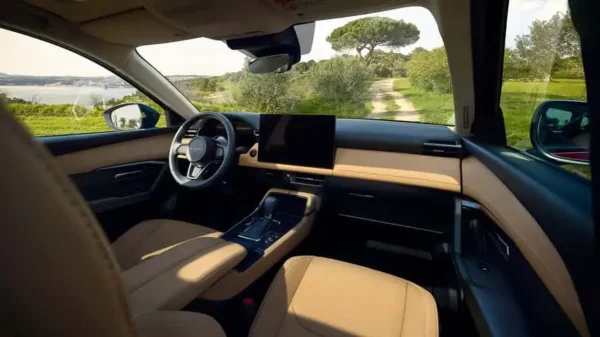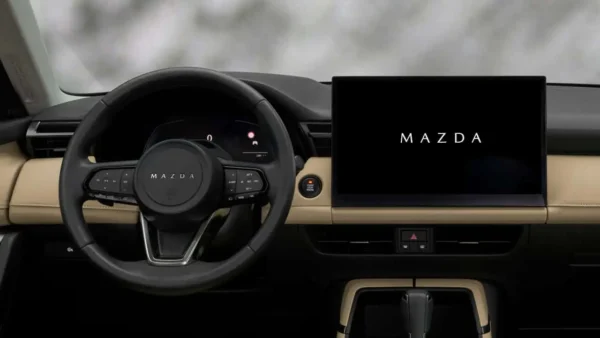Mazda’s Best-Seller Gets a Bold Interior Overhaul
They say, “Never change a winning team,” but Mazda clearly disagrees. With over 4.76 million units sold globally since its debut in 2012, the Mazda CX-5 remains the brand’s top-selling vehicle. Now, in 2025, the third-generation Mazda CX-5 has been revealed, bringing a subtle exterior refresh and a dramatic interior redesign that’s already sparking debate among longtime fans.

A Minimalist Dashboard That Divides Opinion
While the 2025 Mazda CX-5 retains its familiar silhouette, the cabin tells a different story. Gone are the physical knobs, buttons, and rotary dial — replaced by a clean, minimalist dashboard centered around a large infotainment screen.
However, this design shift hasn’t pleased everyone. Early feedback from enthusiasts includes comments like:
“No knobs and buttons, no sale!”
“I need physical controls for HVAC — that’s non-negotiable.”
“Why remove the rotary dial? It was perfect.”
Despite the criticism, Mazda stands by its decision. According to Tamara Mlynarczyk, Public Affairs Manager for Mazda North American Operations, the interior redesign was driven by internal research indicating that customers prefer larger, touchscreen-centric systems over traditional control layouts.

Saying Goodbye to the Rotary Dial
The 2025 CX-5 isn’t the first Mazda to embrace this minimalist direction. Models like the EZ-6 electric sedan (China) and the upcoming EZ-60 crossover have already adopted similar tech-focused interiors. While those cars were developed in partnership with Changan, the new CX-5 is a fully in-house, global Mazda project.
Mazda also joins other automakers, including BMW, in moving away from physical rotary controllers. Even BMW’s Neue Klasse EVs will forgo the rotary dial in favor of fully digital interfaces. This reflects a broader trend in the industry — “less is more,” at least in the eyes of modern design teams.
Will This Interior Philosophy Spread Across Mazda’s Lineup?
It’s still unclear if Mazda’s minimalist interior approach will extend to other future models. Enthusiasts are hoping that iconic cars like the Mazda Miata or the long-teased rotary-powered sports car will retain some tactile, analog charm. For many drivers, a giant screen mounted on the dashboard isn’t a substitute for intuitive, physical controls.
Final Thoughts: Progress or Step Back?
The 2025 Mazda CX-5 redesign represents a major shift in the brand’s design philosophy. While the exterior changes are evolutionary, the interior marks a clear break from the past. Whether this new direction will resonate with longtime fans or alienate them remains to be seen.
For now, the CX-5 is leading Mazda’s charge into a sleeker, more digital future. But one question lingers: Does less really mean more when it comes to driver interaction?



